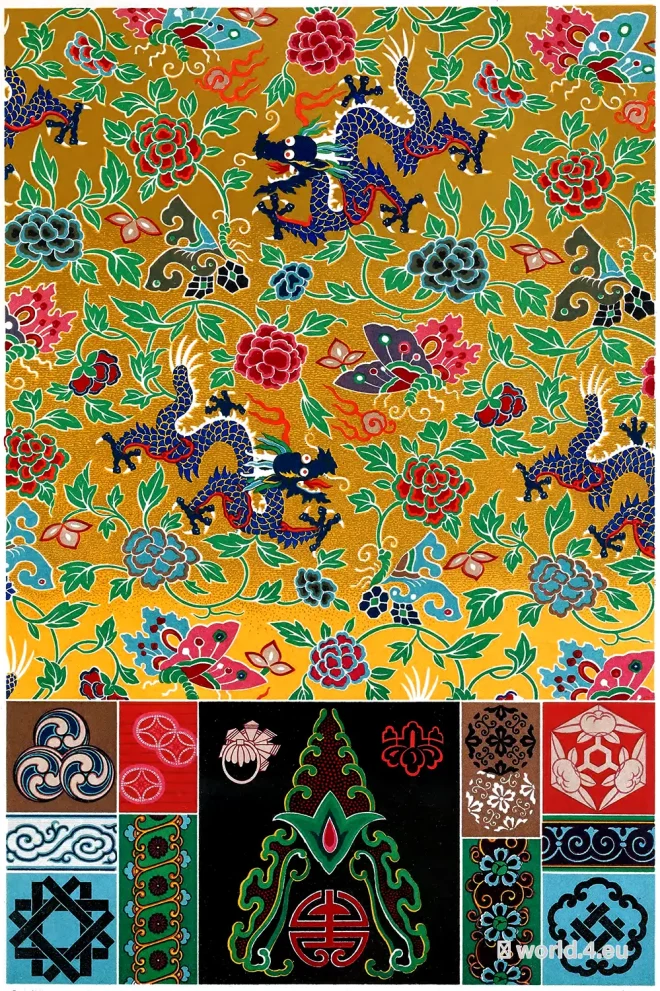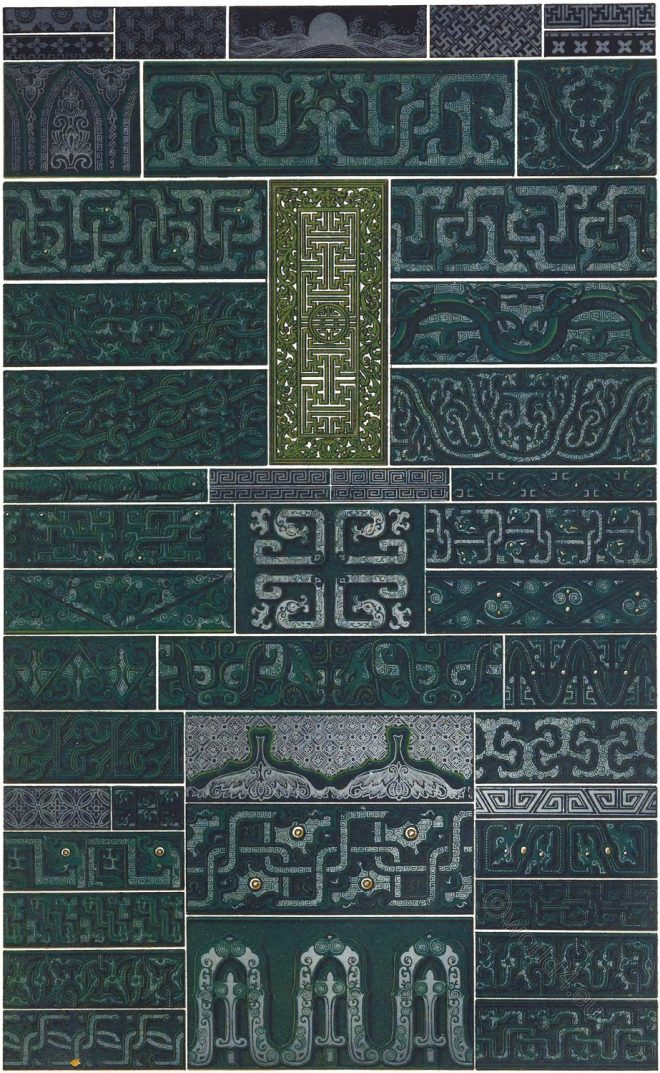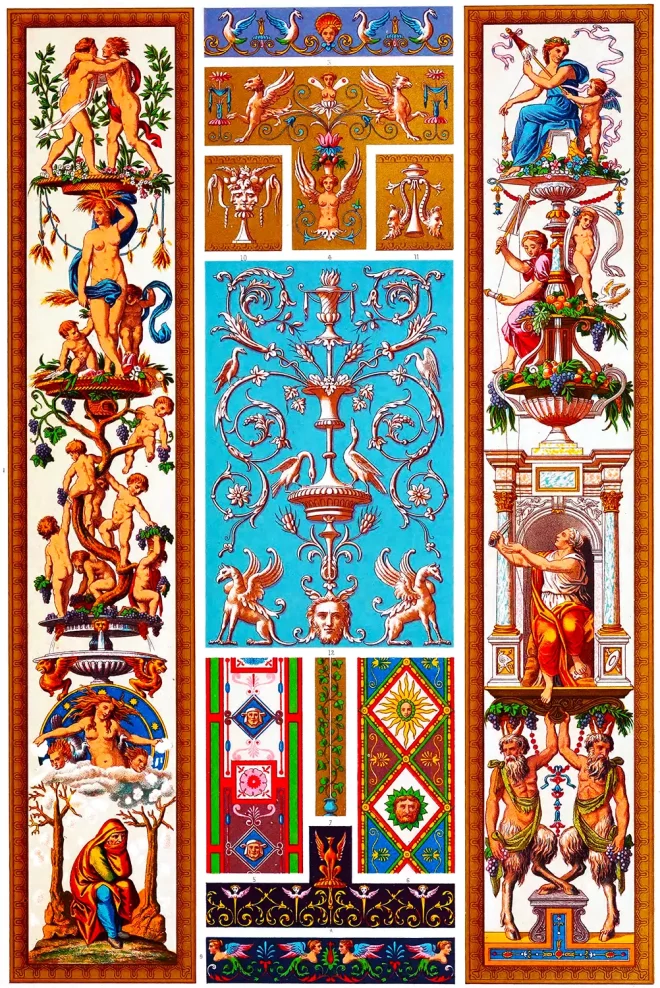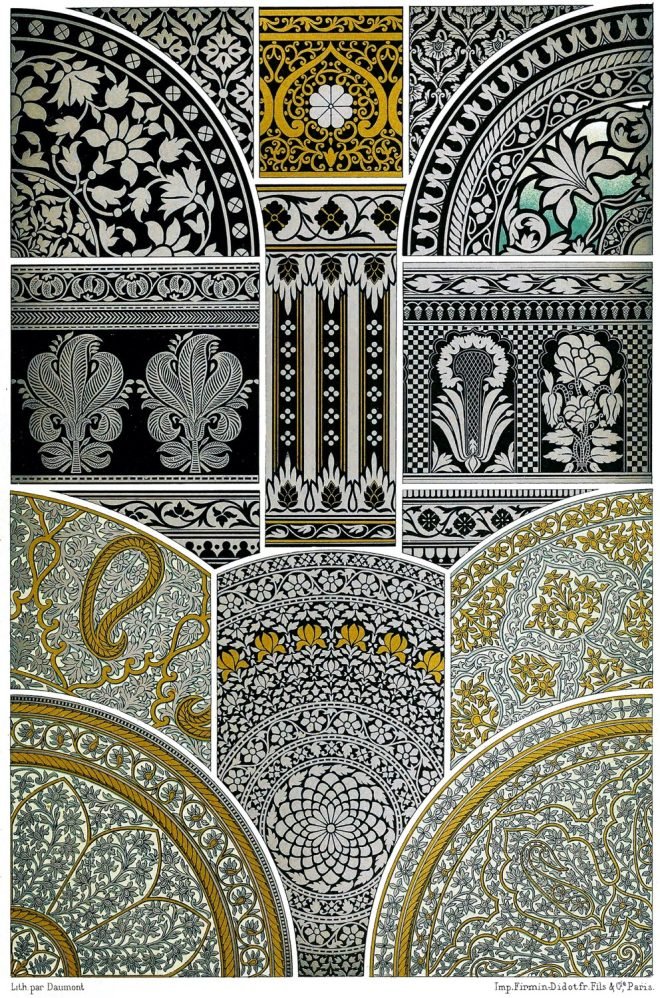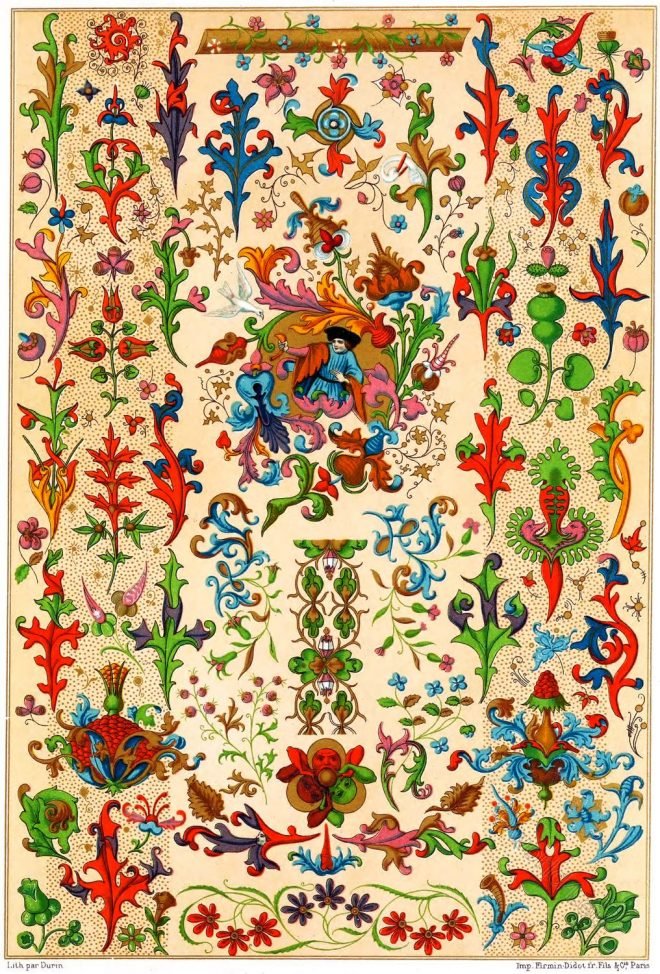Episcopal costume and insignia. The mitre, the cross, the superhumeral, the ring, the gloves, the shoes.
Tag: Auguste Racinet
The Costume History in Chronological Development by Auguste Racinet. Edited by Adolf Rosenberg. Berlin 1888.
Silks and Flowing Patterns. Chinese and Japanese Art.
The piece of silk representation is one of the finest examples of the decoration of woven fabrics that it is possible to study.
Specimens of Japanese Art. Cloisonné Enamel Designs.
Ornamental Cloisonné Enamel Designs. Polychromatic ornament by Auguste Racinet.
Cloisonné Enamel. Specimens of Chinese and Japanese Art.
The various specimens of enamel by Auguste Racinet.
Specimens of Chinese Art. Meanders and Scallops.
Ornamental designs. Specimens of Chinese Art.
Frescoes and Arabesques of Raphael – Loggie of The Vatican.
Renaissance 16th Century. Frescoes and Arabesques of Raphael. Loggie of The Vatican. By Polychromatic ornament by Auguste Racinet.
Indian Art. Niellos and engraved metals. Ornamental decorations.
Niellos and engraved metals. Ornamental decorations on utilitarian objects.
Indian arts and crafts of the 19th century.
Court Toilets & Ceremonial Robes. France 16th, 17th century.
History of Costume by Auguste Racinet. Costumes of the nobility in the time of Henry IV of France. 16th, 17th century. Court Toilets & Ceremonial Robes.
Orders of monks and nuns. Historical religious habit of the Orient.
These oriental monastic and nun’s habit date back to the earliest times of Christianity.
Conventional flora and flower work. Middle ages. 15th century.
THE details that fill the accompanying plate are too numerous for us to indicate the sources from which they have been derived, but they have all been taken from manuscripts of the fifteenth century.


